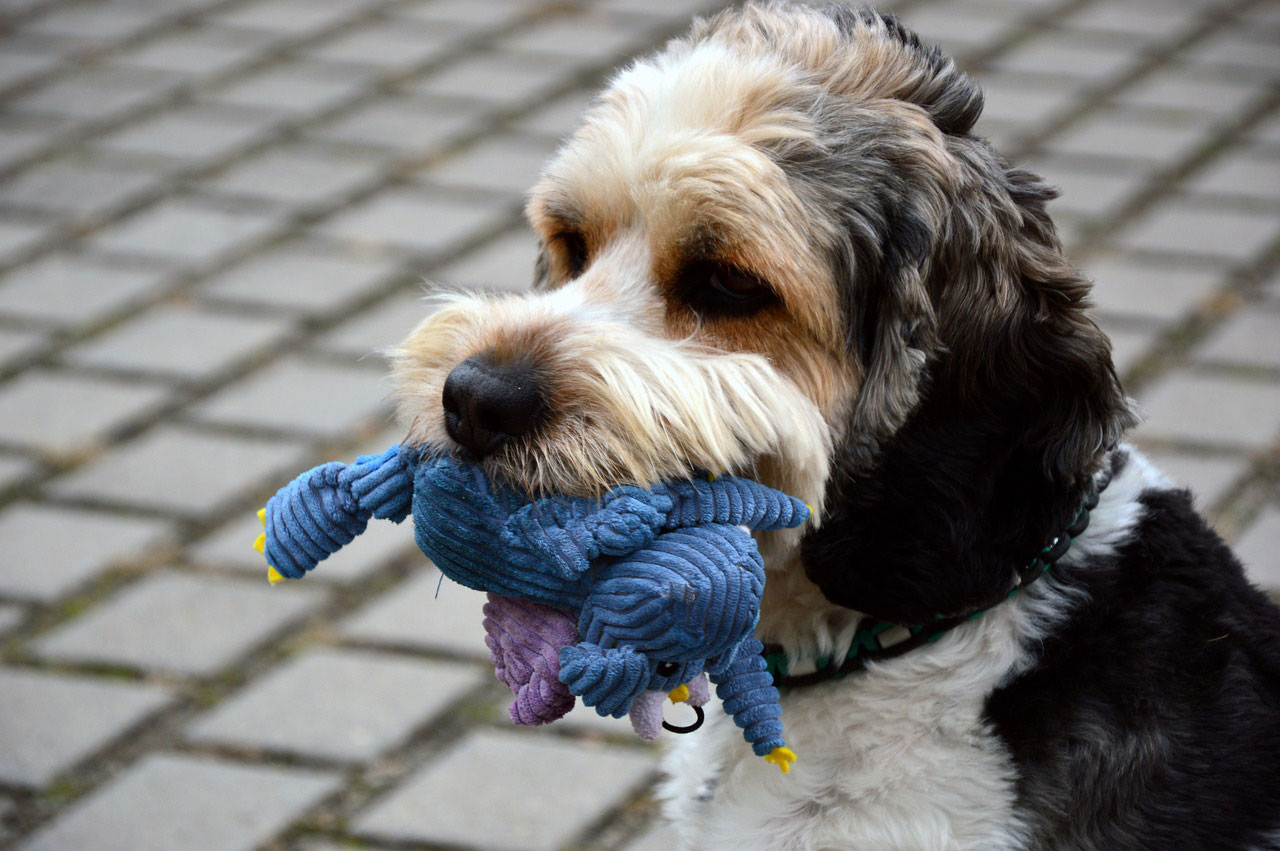
How to Calm Your Dog in Stressful Situations
All of us experience stress. Whether it’s a deadline, a presentation, or another life event triggering the feeling, we can all relate to feeling anxious and overwhelmed as a result of a stressful situation. For dogs, the feeling is similar, but the triggers are different.
In order to calm your dog during stressful situations, it’s important to identify his stress signals. Not only that, it’s also good to prepare for the situations that may trigger feelings of stress and take precautions to protect them from hurting themselves or someone else during these episodes. There are plenty of stress management options to help you keep your dog calm.
Signs of Stress
Since dogs can’t verbalize their feelings, it’s important to pay attention to their behavior in order to identify signs of stress. Many dogs may handle this differently, but the key is identifying behavior that isn’t normal. If your dog is acting differently, remember to consult with your vet in order to rule out any medical problems.
- Pacing: Just like humans, dogs often pace due to stressful situations. It’s a sign of restlessness that can be attributed to stress.
- Whining/barking: This vocalization can be a very clear sign of feeling overwhelmed or scared as a result of stress.
- Shaking: Fear and anxiety can often cause a dog to physically shake as a response.
- Compulsive behavior: Pacing, licking, and chewing can be a response to stress.
- Lack of appetite: There are a lot of reasons why dogs lose their appetite, but a couple of them are stress and anxiety.
- Aggression: If dogs feel stressed, it’s possible that they may act out aggressively, so it’s important to practice caution.
- Avoidance: Hiding, digging, or escaping behavior are common signs that your dog is feeling stressed by something.

Potentially Stressful Situations
All dogs are different, but there are some situations that commonly cause stress in dogs. Not only is it important to prepare for these, it’s also helpful to be aware of your dog’s breed and background. For instance, smaller breeds tend to shake when they are overwhelmed more often than larger breeds. Dogs with a troubled past may be more prone to being triggered by strangers. Be on the lookout for these potentially stressful situations and how your dog reacts to them.
- Loud noises: Loud noises like fireworks, gunshots, and thunderstorms can cause a stress response in any dog regardless of background.
- Strangers: New people or animals can cause a dog to feel stress, especially if they have experienced trauma in the past or have not been properly socialized.
- Separation: Separation anxiety can cause a dog to feel stressed.
- Moving: Moving with pets can be hard on them, especially if you’re moving far away to a new city where everything will be unfamiliar.
- The vet: Some pets feel stress at the vet because they associate it with pain or discomfort.
- New family member: A new baby, partner, or roommate can cause your dog to feel stressed due to the change in his familiar routine and family dynamic.
- Car rides: Cars can cause dogs to feel stressed, which can result in feeling car sick, scared, or trigger escape attempts, which is why it’s important to keep them safe in the car.
Taking Precautions
If you know how your dog is going to react to stress, it’s important to take precautions to help them through it. For instance, remove any hazards in your home, like poisonous plants or chemicals, if he tends to become destructive when stressed. If he runs away during a thunderstorm, bring him inside if bad weather is forecasted. If he becomes aggressive, make sure your family understands to give your dog space in a stressful situation. If you know your dog reacts negatively to certain triggers, work to avoid them. There are options to manage their stress, but you should also take precautions just in case.
Stress Management Options
Each dog, situation, and trigger may require something a little different to help calm your dog when stressed. Talk to your vet and use your own judgment to decide which option will work best for you and your pup.
- Thundershirt: A thundershirt is a product that is created specifically to calm your pet during a thunderstorm or fireworks.
- Pheromones: Pheromones help dogs to feel calm in the same way that a mother keeps her puppies calm. Some even use them to help a dog get acclimated to a new home.
- Chew toys: If your dog is an obsessive chewer as a response to stress, chew toys can help them to cope instead of chewing on something that potentially dangerous.
- Natural supplements: Things like lavender and CBD oil are used to help dogs cope with anxiety and stress—just be sure to check with your vet first.
- Medication: In extreme cases, your dog may be able to take a sedative or prescribed medication to help with the stress. Be sure to talk to your vet about this option.
- Exercise: Exercise is a great natural stress reliever for dogs that can also help with hyperactivity, pacing, and anxiety.
- Crate training: Dogs often feel safe in a small space, so providing them with a crate can give them a place of refuge when they feel stressed.
- Loving attention: Sleeping with your dog close by can help both of you feel less anxiety. You can also try speaking in a calm and happy voice, petting him, or just offering companionship when he feels stressed. Dogs often feel the calmest with their person.
Stress isn’t a fun emotion, and for dogs, it can be confusing and scary to be triggered by something that leaves them feeling this way. Thankfully, there are plenty of options to help them manage their stress. Though you might have to go through periods of trial and error, there is often something that works to help your dog feel calm and happy in times of stress. Just remember to look for the signs, be aware of the common stress triggers for dogs, and take extra precautions when your dog is feeling overwhelmed.










